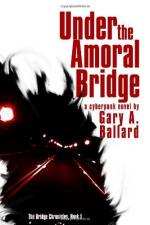|
This section contains 4,986 words (approx. 17 pages at 300 words per page) |

|
SOURCE: “Fiction and the Future,” in College English, Vol. 55, No. 8, December, 1993, pp. 908-18.
In the following essay, Crossley provides a survey of futuristic science fiction works and reviews several works that critically examine science fiction and cyberpunk.
The future has been a viable locale for the novel ever since Mary Shelley imagined a twenty-first century world depopulated by plague in her 1826 The Last Man. H. G. Wells turned Shelley's isolated experiment into a career, patenting the future as a playground of imagination and a laboratory for disciplined speculation. Beginning in 1895 with The Time Machine, he produced a series of romances of anticipation that marked out the iconography of a new genre. In The War of the Worlds, The Island of Dr. Moreau, When the Sleeper Wakes, The First Men in the Moon, and The World Set Free, he established the conventions and the taste for fiction about extraterrestrial...
|
This section contains 4,986 words (approx. 17 pages at 300 words per page) |

|


